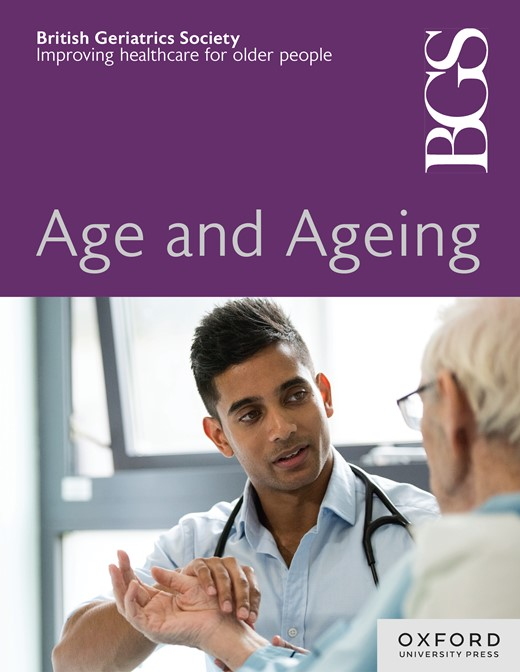在识别老年人残疾风险方面,步态速度慢比虚弱和肌肉减少症更好
IF 7.1
2区 医学
Q1 GERIATRICS & GERONTOLOGY
引用次数: 0
摘要
目的 比较虚弱症、肌肉疏松症及其各自的组成部分,以确定哪种方法能更有效地识别基本日常生活活动和工具性日常生活活动(BADL 和 IADL)的残疾风险。方法 这是一项纵向研究,涉及 3,637 名在基本日常生活能力方面没有残疾的人和 3,696 名在工具性日常生活能力方面没有残疾的人。根据表型对虚弱进行定义。根据 EWGSOP2 提出的标准确定了 "肌肉疏松症":低力量(男性握力为 27 千克,女性握力为 16 千克)、低骨骼肌质量指数(男性骨骼肌质量指数为 9.36 千克/平方米,女性骨骼肌质量指数为 6.73 千克/平方米)和低体能(步速≤0.8 米/秒)。除了完整的结构外,还对每个组成部分进行了评估。采用泊松混合模型,结果确定为 8 年内发生的残疾病例,并根据协变量进行调整。结果显示在日常生活自理能力(BADL)和综合生活自理能力(IADL)方面,虚弱前的残疾风险每年分别增加 17% 和 18%。体弱者的这一比例分别为 27% 和 28%。肌肉疏松症与残疾风险增加无关。在体弱和肌肉疏松症的各种因素中,以步速小于 0.8 米/秒来评估的体能低下是最有效的致残风险识别指标(BADL 和 IADL 的致残风险分别为每年 12% 和 14%)。结论 在临床实践中,低体能(步速≤0.8 米/秒)可能是筛查老年人功能衰退风险的首选工具。本文章由计算机程序翻译,如有差异,请以英文原文为准。
Low gait speed is better than frailty and sarcopenia at identifying the risk of disability in older adults
Objective To compare frailty, sarcopenia and their respective components to determine which is more effective in identifying the risk of disability in basic and instrumental activities of daily living (BADL and IADL, respectively). Methods A longitudinal study involving 3,637 individuals without disabilities concerning BADL and 3,696 individuals without disabilities regarding IADL at baseline. Frailty was defined using the phenotype. Sarcopenia was determined according to the criteria proposed by the EWGSOP2: low strength (grip strength <27 kg for men and <16 kg for women), low skeletal muscle mass index (<9.36 kg/m2 for men and <6.73 kg/m2 for women) and low physical performance (gait speed ≤0.8 m/s). In addition to the complete constructs, each component was assessed. Poisson mixed models were utilised, with the outcome identified as incident cases of disability over 8 years, adjusted for covariates. Results: Pre-frailty was associated with a 17% and 18% annual increase in the risk of disability for BADL and IADL, respectively. These figures were 27% and 28% for individuals classified as frail. Sarcopenia was not associated with an increased risk of disability. Amongst the components of frailty and sarcopenia, low physical performance, assessed by gait speed ≤0.8 m/s, was the most effective for identifying the risk of disability (12% per year for BADL and 14% per year for IADL). Conclusion In clinical practice, low physical performance (gait speed ≤0.8 m/s) may be the preferred tool for screening the risk of functional decline in older adults.
求助全文
通过发布文献求助,成功后即可免费获取论文全文。
去求助
来源期刊

Age and ageing
医学-老年医学
CiteScore
9.20
自引率
6.00%
发文量
796
审稿时长
4-8 weeks
期刊介绍:
Age and Ageing is an international journal publishing refereed original articles and commissioned reviews on geriatric medicine and gerontology. Its range includes research on ageing and clinical, epidemiological, and psychological aspects of later life.
 求助内容:
求助内容: 应助结果提醒方式:
应助结果提醒方式:


